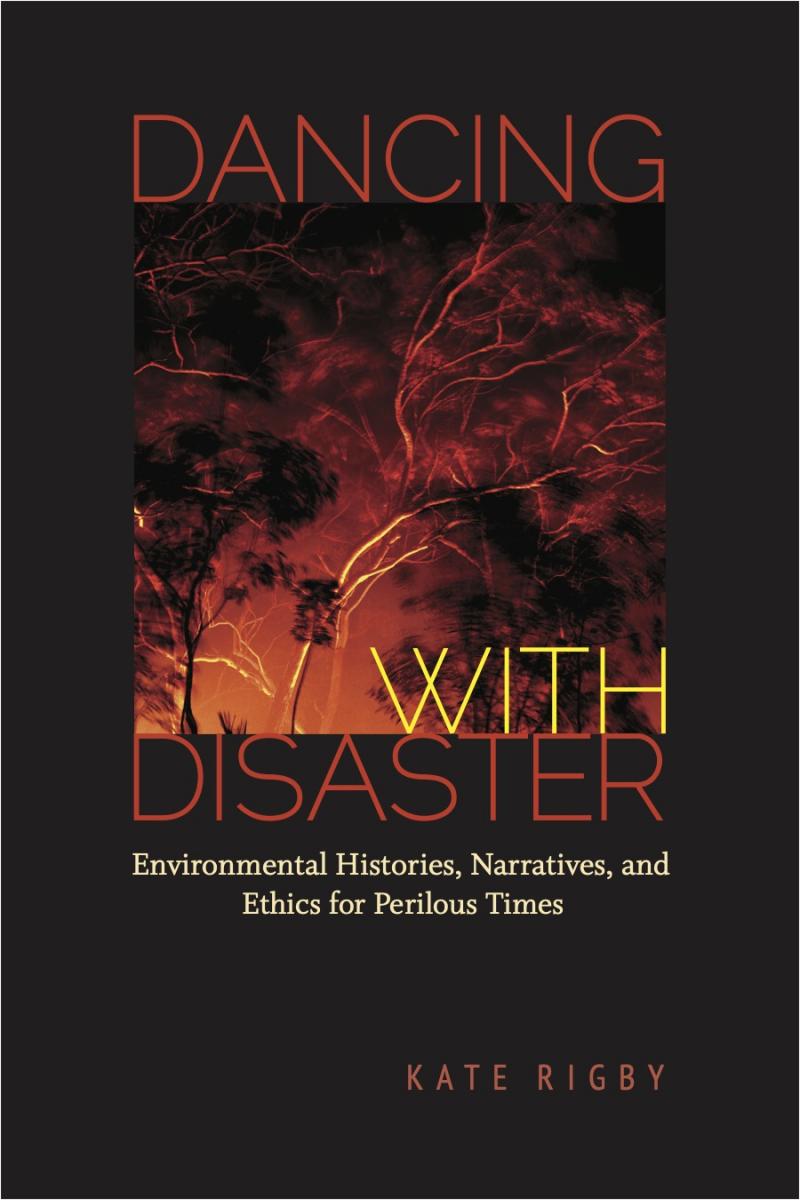Rigby, Kate. Dancing with Disaster: Environmental Histories, Narratives, and Ethics for Perilous Times. Charlottesvielle: University of Virginia Press, 2015.
© 2015 by the Rector and Visitors of the University of Virginia. Reprinted by permission of the University of Virginia Press.
Choice Outstanding Academic Title, American Library Association (2015)
The calamitous impacts of climate change that are beginning to be felt around the world today expose the inextricability of human and natural histories. Arguing for a more complex account of such calamities, Kate Rigby examines a variety of past disasters, from the Black Death of the Middle Ages to the mega-hurricanes of the twenty-first century, revealing the dynamic interaction of diverse human and nonhuman factors in their causation, unfolding, and aftermath.
Focusing on the link between the ways disasters are framed by the stories told about them and how people tend to respond to them in practice, Rigby also shows how works of narrative fiction invite ethical reflection on human relations with one another, with our often unruly earthly environs, and with other species in the face of eco-catastrophe. In its investigation of an array of authors from the Romantic period to the present—including Heinrich von Kleist, Mary Shelley, Theodor Storm, Colin Thiele, and Alexis Wright— Dancing with Disaster demonstrates the importance of the environmental humanities in the development of more creative, compassionate, ecologically oriented, and socially just responses to the perils and possibilities of the Anthropocene.
On chapter 2, “Spreading Pestilence”:
While all disasters are embedded in longer-term socio-ecological processes and patterns of vulnerability extending beyond the locality in which they occur, geo-physical occurrences such as earthquakes, tsunamis, and tornadoes generally occur over a matter of seconds, minutes or hours, and their immediate impacts are confined to the region affected. The outbreak of a contagious disease with a high morbidity rate, by contrast, constitutes a slow-onset or “creeping” catastrophe, with the potential to afflict human (and in many cases some other-than-human) populations globally. Disease epidemics and, in the worst case scenario, pandemics, also differ from those calamities induced by the liveliness of the lithosphere in the complexity of their aetiology. Epidemics are hybrid through and through: pestilence spreads, to be sure, and over the past one hundred and fifty years our understanding of the multiple other-than-human agencies responsible for the proliferation of infectious diseases has grown enormously; but so too have those socio-cultural practices through which humans themselves inadvertently spread pestilence across the planet. In this chapter from my monograph Dancing with Disaster (of which I include an excerpt here), I consider how just such a scenario of socio-culturally intensified vulnerability to a lethal pandemic was prefigured by Mary Shelley in her dystopian novel, The Last Man (1826), in which the virtual extinction of humankind unfolds, uncannily for today’s readers, amidst an oddly disordered climate in the closing decades of this century. In the case of an eco-catastrophe involving infectious disease, we are reminded of the vulnerabilities that inhere in our utter dependence upon an unruly biosphere that was not designed for our exclusive benefit. In a contemporary horizon of disease risk, moreover, reducing human susceptibility to contagion cannot be divorced from ethical questions concerning our treatment of other animals.
—Kate Rigby


